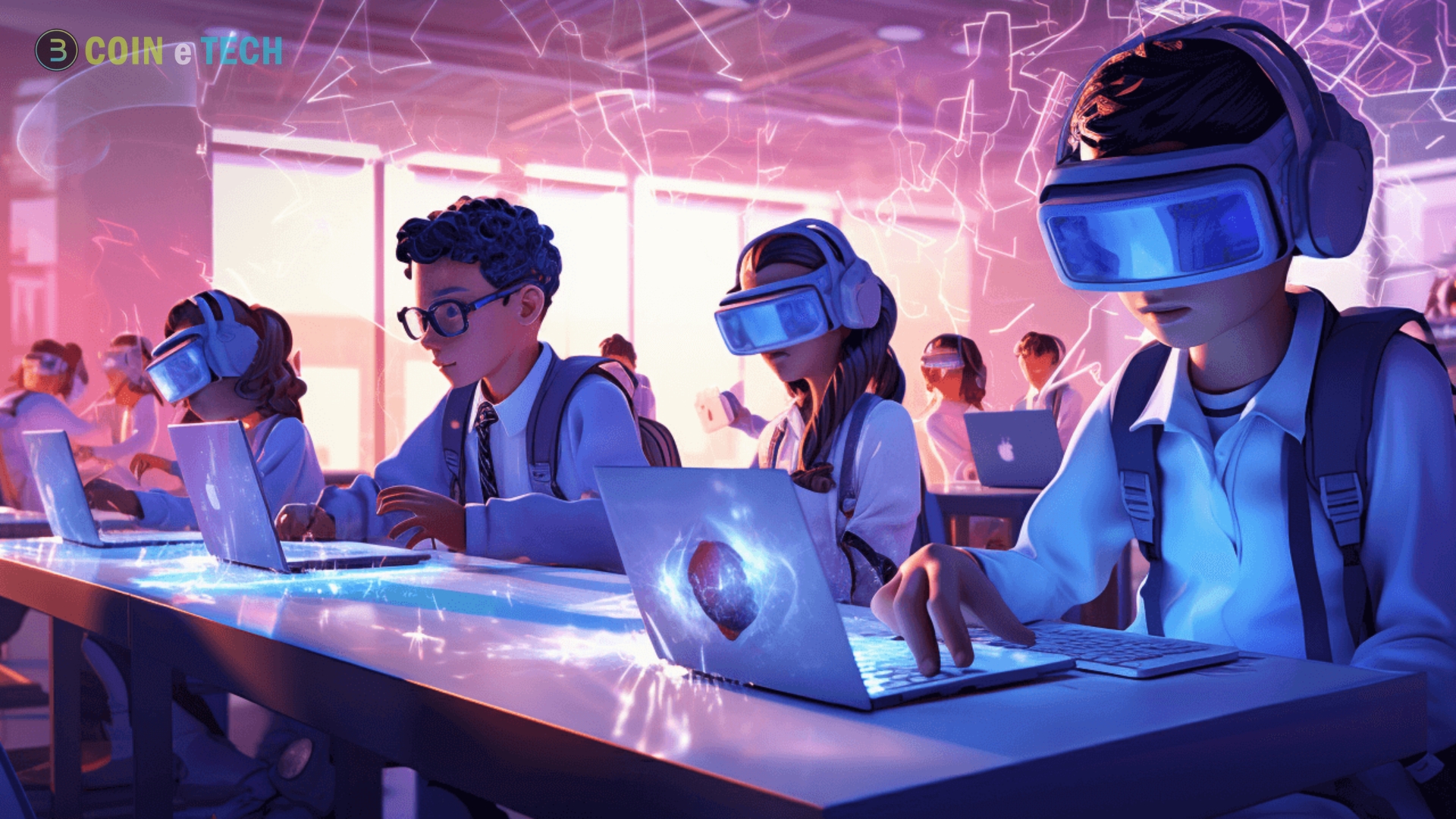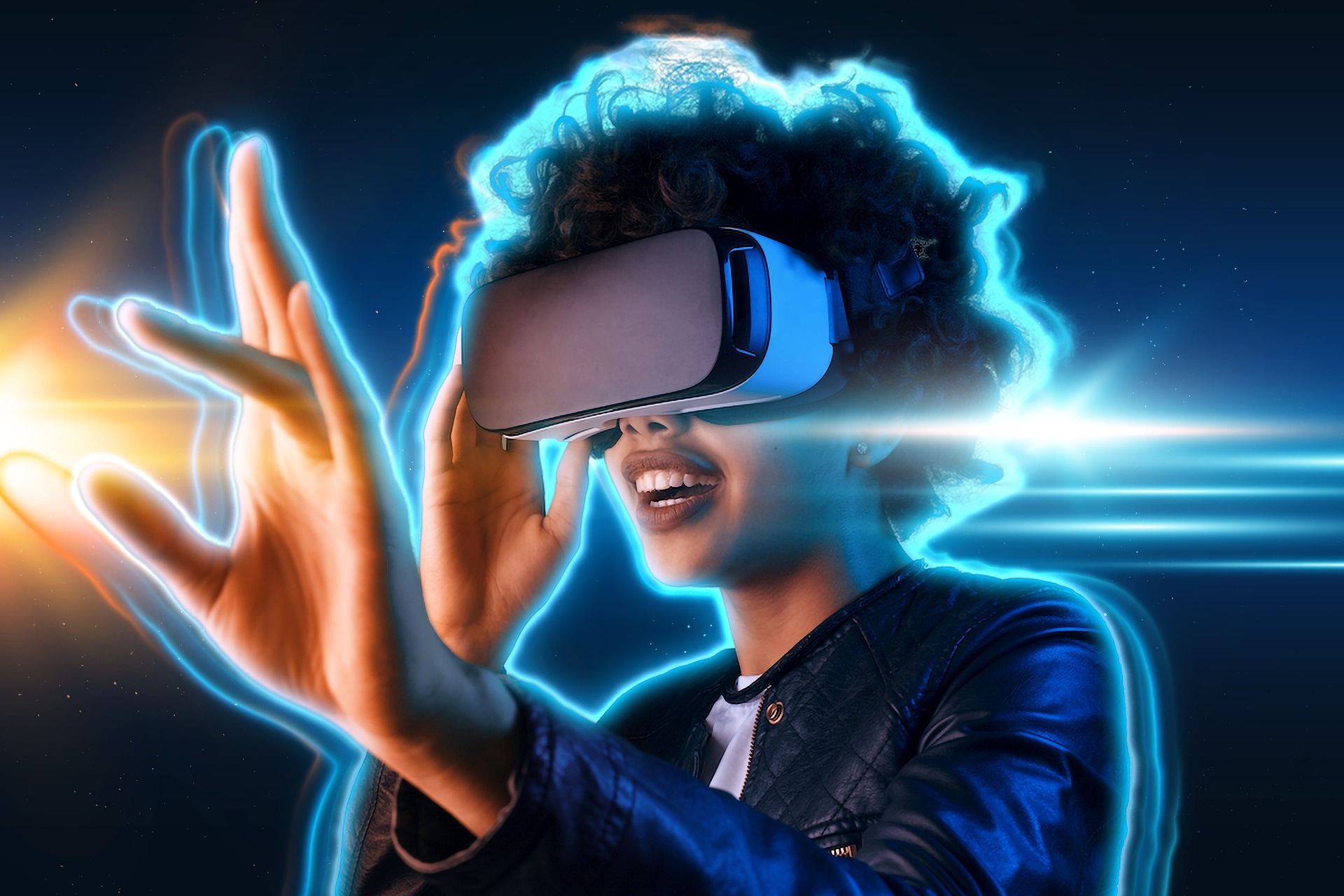Metaverse for Education. Individuals can construct their digital worlds in the metaverse. It also provides a platform where people from all over the globe may interact more personally than in other ways. The metaverse offers an ingenious way to participate in virtual conversations with people from all around the globe. Virtual reality headsets or web browsers make it possible for anybody, wherever, to join a virtual realm and have human-to-human conversations.
You might conceive of the metaverse as a digital twin of our reality. Users and developers can make it their own, creating virtual schools and stadiums on their domains. Plus, it’s a new way to connect with loved ones in a world where borders are blurred due to natural catastrophes and pandemics.
Metaverse Opportunities for Education
Using VR headsets, students and instructors can join virtual classrooms regardless of location. Such features can benefit eager learners and improve their education. One area that might be profoundly affected by a continuous parallel reality is education, but the possibilities are boundless. Let’s pretend we’re in one of the potential VR lecture halls. Envision a history class brimming with enthusiastic learners. These kids are located in different parts of the world, and their instructor is a nomad who is always exploring new places to educate them about history.
The teacher and pupil don’t need to be in the same physical place to meet in the metaverse. Educators can draw on their first-hand experience to provide pupils with up-to-date information. Next, we’ll take a look at the virtual classroom options. Not only can the instructor share their findings with the class, but they can also demonstrate them in a fully immersive 3D setting.
A physical replica of a famous site can replace the present-day workstations and seats at any moment. Students can inquire, gain first-hand experience, and explore independently. Curious kids will no longer be confined to a stuffy classroom. The potential of virtual worlds, on the other hand, allows them to find joy in learning.
Teaching and Learning in the Metaverse
Instead of just reading from a book, students can gain hands-on experience by constructing virtual environments according to their instructional plans. Metaverse for Education and training may seem like an unbelievable, faraway idea, yet many real-life examples exist.
Consider a game such as Roblox. Using Roblox, anybody can create and share their virtual environment, much like Minecraft or Fortnite. Roblox classrooms are now a part of this world-building concept, which was initially employed for user creation. Through private servers, educators and students can participate in Roblox classrooms in both virtual and real-world settings. For example, a school computer lab can allow students to join an instructor in a virtual environment.
While the instructor and students will interact in the physical world, the virtual world could be used to display a historical site on the computer screens. Metaverses can revolutionize education, and Roblox’s virtual learning experiences are a shining illustration of this. Students participate in virtual classrooms using their own devices from the comfort of their own homes rather than physically being there at a physical location.
Students can learn the subject in a risk-free virtual setting using physics simulations and historical event role-playing worlds. Rather than relying solely on textbook knowledge, such encounters usher in a new era of experiential learning.
One obvious benefit of virtual learning environments is that anyone from any location can access them. This is also true of existing metaverse learning settings. On the other hand, metaverse environments have the potential to be significantly more immersive than Roblox.
Benefits of Metaverse Learning Environments
One advantage of teaching students how to utilize VR in the classroom is the opportunity to “visit” historical sites or practice potentially harmful experiments in a controlled setting rather than in the actual world. Roblox and similar games offer a modern alternative to traditional online learning environments, but they fall short compared to the metaverse in several respects.
First, metaverse environments aren’t limited to a specific type of graphics. Because of their comical graphics, games like Roblox, Minecraft, and Fortnite can lure students’ attention away from the learning process and make them feel like they’re playing a beloved game.
On the other hand, the architecture of a metaverse setting allows for a plausible appearance. Educators, in their preferred metaverse, will have the power to craft a visually breathtaking setting that will enchant pupils of all ages. Plus, the fact that metaverse settings can mimic actual places ups the ante considerably in terms of immersion.
Metaverse worlds can include tactile contact in addition to visual immersion. Students might feel like they’re using their own hands and fingers with virtual reality goggles and controllers. Teachers can now incorporate nuanced hand movements into sign language and writing sessions. When youngsters return from the virtual world, revisiting their lessons won’t feel different. They’ll have muscle memory.
Metaverse for Education spaces can also foster a sense of security, unlike traditional classroom instruction. Teachers can restrict bullying or segregate students for disciplinary reasons by modifying a few permissions in the metaverse, giving them full control over student interactions. In this approach, kids won’t have to worry about bullies or anything else that can divert their attention from learning. Because kids won’t be congregating in one place, digital surroundings can help avert tragedies like school shootings.
Disadvantages of Metaverse Learning Environments
Although discovering how it assists educators and students highlights the advantages of Metaverse for Education over conventional schooling, it is also important to consider the disadvantages. Virtual reality classrooms have many potential benefits, but they also have significant drawbacks. For example, certain individuals may be unable to provide the necessary adjustments for children who have disabilities, such as those who have trouble seeing or hearing. American schools probably couldn’t accommodate a deaf Chinese student who wanted to attend a metaverse lesson they were hosting.
It would be the responsibility of the parents, not the school, to assist a child with special needs in this situation. This is a sad situation because most schools include accommodations for students with disabilities. The evidence presented here strongly suggests that both infants and adults can develop an addiction to the metaverse. The risk of students spending too much time in virtual reality (VR) for both schoolwork and fun increases if they use the same headset for both purposes. It may be challenging to strike a balance between spending more time in virtual worlds and spending enough time in the actual world.
The issue of accessibility comes up last. Metaverse schooling can only grow and prosper if virtual reality headsets are more widely available to families worldwide. Until this changes, the majority will not have access to such education.






